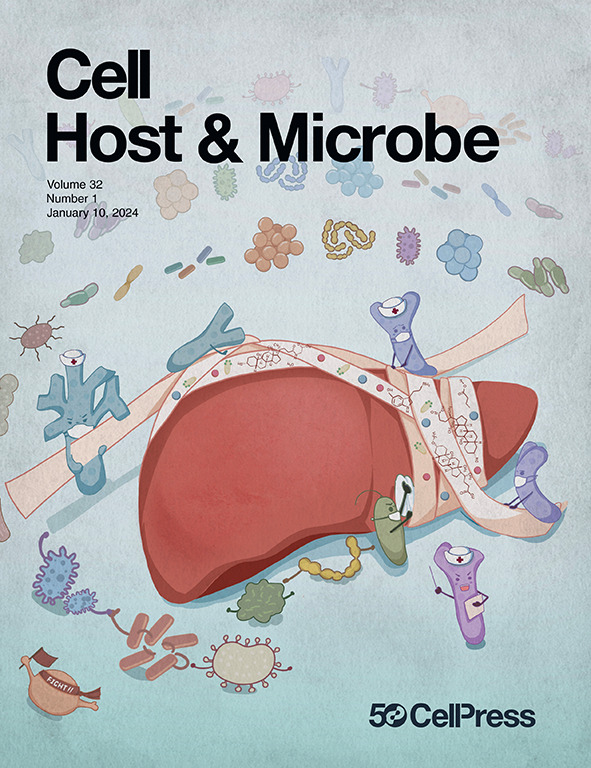Phocaeicola vulgatus shapes the long-term growth dynamics and evolutionary adaptations of Clostridioides difficile
IF 20.6
1区 医学
Q1 MICROBIOLOGY
引用次数: 0
Abstract
Clostridioides difficile can transiently or persistently colonize the human gut, posing a risk for infections. This colonization is influenced by complex molecular and ecological interactions with the human gut microbiota. By investigating C. difficile dynamics in human gut communities over hundreds of generations, we show patterns of stable coexistence, instability, or competitive exclusion. Lowering carbohydrate concentrations shifted a community containing C. difficile and the prevalent human gut symbiont Phocaeicola vulgatus from competitive exclusion to coexistence, facilitated by increased cross-feeding. In this environment, two key mutations in C. difficile altered its metabolic niche from proline to glucose utilization. These metabolic changes in C. difficile substantially impacted gut microbiota inter-species interactions and reduced disease severity in mice. In sum, interactions with P. vulgatus are crucial in shaping the long-term growth dynamics and evolutionary adaptations of C. difficile, offering key insights for developing anti-C. difficile strategies.

普通Phocaeicola vulgatus塑造了艰难梭菌的长期生长动态和进化适应
艰难梭菌可以短暂或持续定植在人体肠道,造成感染的风险。这种定植受到与人类肠道微生物群复杂的分子和生态相互作用的影响。通过研究艰难梭菌在数百代人肠道群落中的动态,我们展示了稳定共存、不稳定或竞争排斥的模式。降低碳水化合物浓度使含有艰难梭菌的群落和普遍存在的人类肠道共生体vulgatus Phocaeicola从竞争排斥转变为共存,促进了交叉喂养的增加。在这种环境下,艰难梭菌的两个关键突变改变了它的代谢生态位,从脯氨酸到葡萄糖的利用。艰难梭菌的这些代谢变化极大地影响了肠道微生物群的物种间相互作用,降低了小鼠的疾病严重程度。总之,与普通假单胞菌的相互作用对艰难梭菌的长期生长动态和进化适应至关重要,为开发抗艰难梭菌提供了关键的见解。困难的策略。
本文章由计算机程序翻译,如有差异,请以英文原文为准。
求助全文
约1分钟内获得全文
求助全文
来源期刊

Cell host & microbe
生物-微生物学
CiteScore
45.10
自引率
1.70%
发文量
201
审稿时长
4-8 weeks
期刊介绍:
Cell Host & Microbe is a scientific journal that was launched in March 2007. The journal aims to provide a platform for scientists to exchange ideas and concepts related to the study of microbes and their interaction with host organisms at a molecular, cellular, and immune level. It publishes novel findings on a wide range of microorganisms including bacteria, fungi, parasites, and viruses. The journal focuses on the interface between the microbe and its host, whether the host is a vertebrate, invertebrate, or plant, and whether the microbe is pathogenic, non-pathogenic, or commensal. The integrated study of microbes and their interactions with each other, their host, and the cellular environment they inhabit is a unifying theme of the journal. The published work in Cell Host & Microbe is expected to be of exceptional significance within its field and also of interest to researchers in other areas. In addition to primary research articles, the journal features expert analysis, commentary, and reviews on current topics of interest in the field.
 求助内容:
求助内容: 应助结果提醒方式:
应助结果提醒方式:


